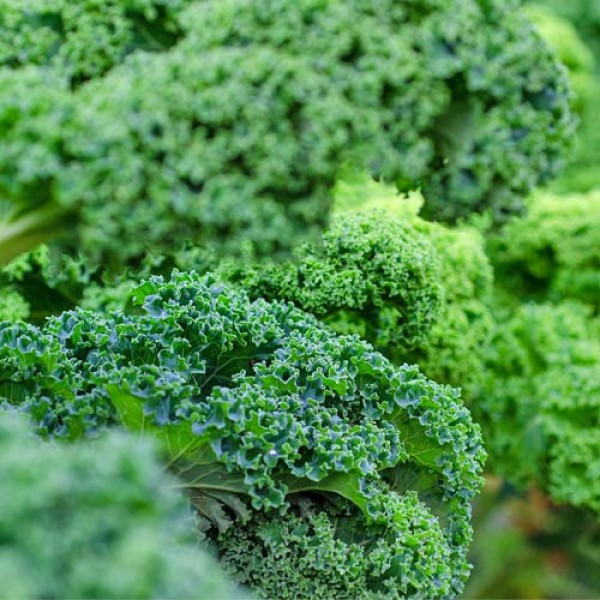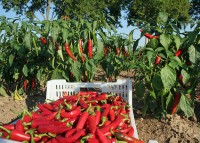
Kale - fresh vegetable also in winter
Kale - the vegetable of the North Germans
Kale is one of the oldest types of cabbage. It was cultivated in the Mediterranean region already in Roman times. In Germany, however, kale is known as the "palm of the north" and is most popular along the coast. In the north, kale is usually served as "kale with pinkel" (pinkel is a smoked sausage with coarse grains).
Kale is a winter vegetable that can survive temperatures down to -15 °C. Green cabbage contains a lot of fibre, vitamins and minerals. Therefore, kale is healthy and delicious in one and is becoming more and more of a trendy vegetable.
Location
Kale is a heavy feeder, it feels most comfortable in a bed with humus-rich, nutrient-rich and calcareous soil with a pH-value between 6 - 7.5.
The plant also tolerates sandy soils, but then it should be fertilised regularly with high-quality compost or well-rotted cattle manure.
Before seeding, you always have to check the variety, because from a height of 30 cm up to a height of 1.50 m, kale is a vegetable that grows to stately sizes.
It prefers a sunny spot, but will also withstand temperatures as low as -15 °C. The best taste even comes after the first frost has covered the vegetable.
Good neighbours for kale in the bed are: Tomatoes, radicchio, beetroot, celery or lettuce.
Sowing
The optimal time to sow kale outdoors is from mid-May onwards.
Because kale has deep roots, make sure to loosen the soil well to a depth of 50 cm before sowing. It is best to already mix compost or cattle manure into the soil for best results when harvesting. It is best to plant rows 80 cm wide apart because the plants need a lot of space to grow. If you have prepared all this, you can sow the kale seeds directly into the prepared bed.
For this, place the seeds 1-2 cm deep in the soil with a plant spacing of 40 cm.
After sowing, press the soil over the seeds lightly and keep it constantly wet. Do not allow the seeds to dry out!
The optimal temperature for kale to sprout is between 15-20°C and the first sprouts can already be seen after 6-8 days.
Care
The soil should be fertilized regularly with compost, because kale is considered a "heavy feeder" and needs a high ampunt of nutrients. Kale does not tolerate waterlogging or drought, so make sure to water the kale regularly and check the soil for moisture by pricking the soil a little with your finger. Regularly chop the soil and pull out any weeds that are left over, as any weeds take important nutrients from the soil.
Protection from pests and diseases
Because kale is often attacked by pests, soil enrichment with lime can prevent them. As all types of kale are readily attacked by the cabbage fly, you can protect your kale from pests with a cabbage collar and extra fly netting over the bed.
Harvesting
Kale is most delicious if you harvest it after the first frost. It loses its bitterness with the frost and becomes sweeter.
The main harvesting time for kale is from November to January, but it can still be harvested and eaten in February or March.
You don`t have to harvest the whole cabbage at once. To extend the harvest time, you can harvest individual leaves, because kale has no problems withstanding temperatures as low as -15 °C. If you leave the stalk after harvesting in mild temperatures, more leaves will often grow for harvesting.
Kale is a two-year plant, in the first year the plant forms a stem with light green to dark green, purple or brown leaves which are wavy and curly. In the second year, if left standing in the bed, the plant flowers and produces elongated pods with black seeds.













